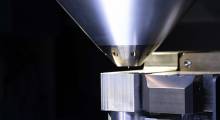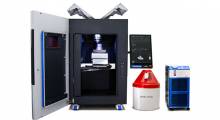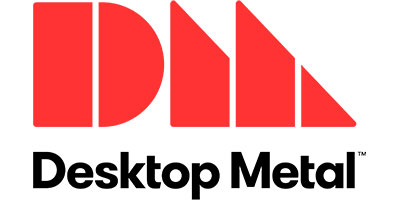Desktop Metal has introduced Live Sinter, new sintering process simulation software that corrects for shrinkage and distortion of binder jet 3D printing parts during sintering. Desktop Metal says use of the new software largely eliminates the need for physical trial and error, and makes possible using binder jet sintering on challenging geometries.
Desktop Metal says sintering is a critical step in powder metallurgy-based manufacturing processes, including binder jetting. It involves heating parts to near melting to impart strength and integrity, and typically causes parts to shrink by as much as 20% from their original printed or molded dimensions. During the process, improperly supported parts also face significant risk of deformation, resulting in parts that emerge from the furnace cracked, distorted or requiring costly post-processing to achieve dimensional accuracy.
Traditionally the solution for shrinkage and distortion was to rely on the experience of industry veterans who, based on repeated trial and error, combine adjustments to part designs with various sintering supports, or “setters,” to enable stable, high-volume production. The company says Live Sinter “changes the game by minimizing the reliance on trial and error,” offering “streamlined, easy-to-use software solution that delivers accurate parts without requiring users to be experts in powder metallurgy.”
Desktop Metal says Live Sinter results in near-net shape parts after sintering, achieving tight shape and dimensional tolerances while diminishing or eliminating the need for sintering supports. This means additive manufacturing engineers now have a software option for testing fast and predictable sintering outcomes. The company says simulation results can be ready in as little as 5 minutes and negative offset geometries in as few as 20 minutes.

The software launch follows Desktop Metal’s recent signing of a definitive business combination agreement with Trine Acquisition Corp. The company considers Live Sinter “a breakthrough software application” for its ability to not only correct for the shrinkage and distortion parts typically experience during sintering, but also for how it opens the door to printing geometries that, without the software, would present significant challenges to sinter.
By improving the shape and dimensional tolerances of sintered parts, first-time part success for complex geometries is improved and the cost and time associated with post-processing are minimized. The company says that, In many cases, the software even enables parts to be sintered without the use of supports.
Sintering simulation is a complex multiphysics problem that involves modeling how parts and materials respond to a number of factors, including gravity, shrinkage, density variations, elastic bending, plastic deformation, friction drag and more. The thermodynamic and mechanical transformations that occur during sintering take place under intense heat, making them difficult to observe without either halting the sintering process mid-cycle or installing windows in the furnace to observe distortions from images taken at high temperature. While such methods are potentially tolerable in R&D environments, they create significant delays and costs in time to market for production applications.
Live Sinter can be calibrated to a variety of alloys. It predicts the shrinkage and distortion that parts undergo during sintering, and automatically compensates for such changes, creating “negative offset” geometries that, once printed, will sinter to the original, intended design specifications. These negative offsets are the result of a GPU-accelerated iterative process, in which the software proactively pre-deforms part geometries by precise amounts in specific directions, allowing them to achieve their intended shape as they sinter.
Live Sinter runs on a GPU-accelerated multiphysics engine, capable of modeling collisions and interactions between hundreds of thousands of connected particle masses and rigid bodies. The multiphysics engine’s dynamic simulation is refined using an integrated meshless finite element analysis (FEA), which computes stress, strain and displacement across part geometries used to predict not only shrinkage and deformation, but also risks and failures, validating the feasibility of a part for sintering-based additive manufacturing before the build begins.
The software is compatible with any sintering-based powder metallurgy process, including metal injection molding (MIM), Live Sinter will first be available to customers of Desktop Metal’s Shop System, shipping in late 2020, and Production System, shipping in 2021.
About the Author
Press releases may be sent to them via [email protected]. Follow Robotics 24/7 on Facebook
Follow Robotics 24/7 on Linkedin
Article topics
Email Sign Up

















